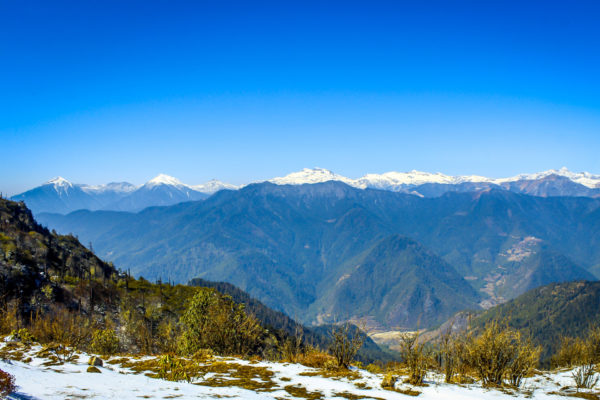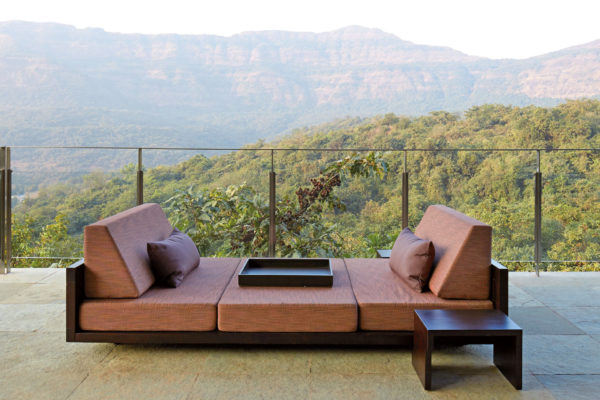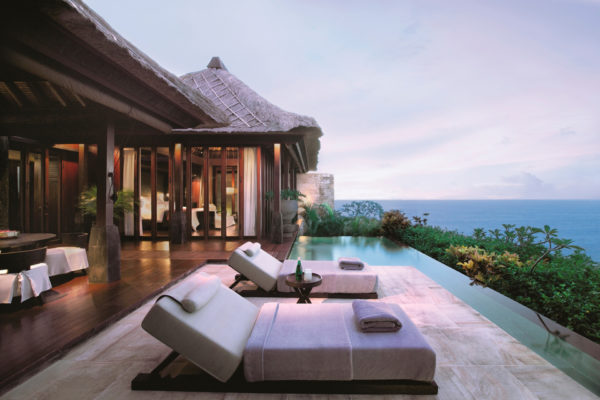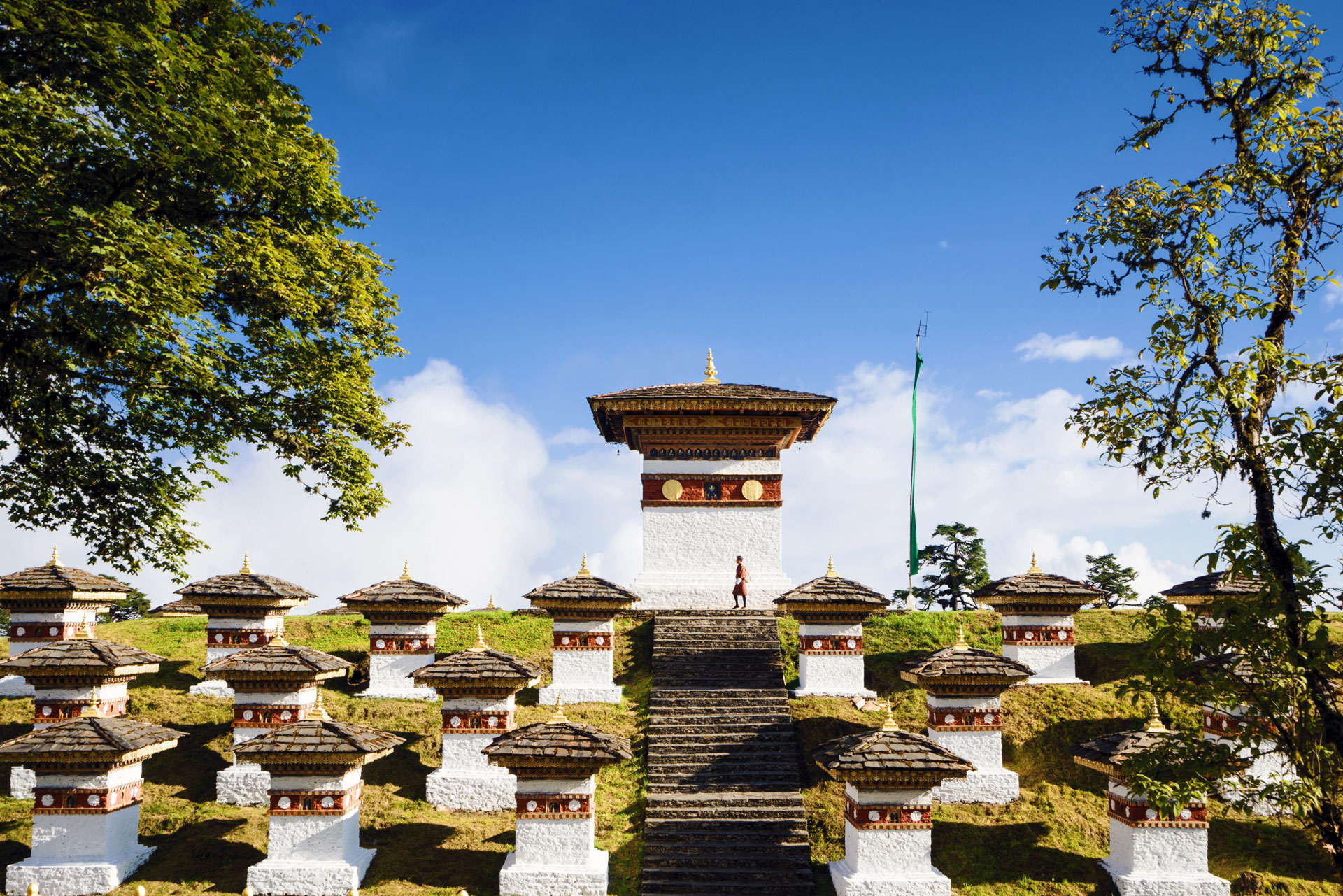
- HOME
- TRAVEL
Bhutan: Lessons in Zen
Discovering carbon-negative karma in Bhutan
By | 1 year ago
Emma Love discovers Bhutan, the world’s only carbon-negative country, one temple at a time
Read the C&TH Responsible Tourism Guide
It’s early morning on a hillside above Thimphu, the tiny, low-key capital of landlocked Bhutan. One of the country’s chief lamas is sitting on the floor wearing red robes, wooden beads held loosely in his hands, encouraging my small group to stop our whirring minds from wandering and instead to focus on nothing. Not to think about the stillness of the ornamental pools surrounding the wooden prayer pavilion, which reflect the slow-moving, billowy clouds, nor to think about the views of the majestic mountains and the low-lying green valley stretched out enticingly below. And definitely not to ponder the nitty-gritty of life back in London.
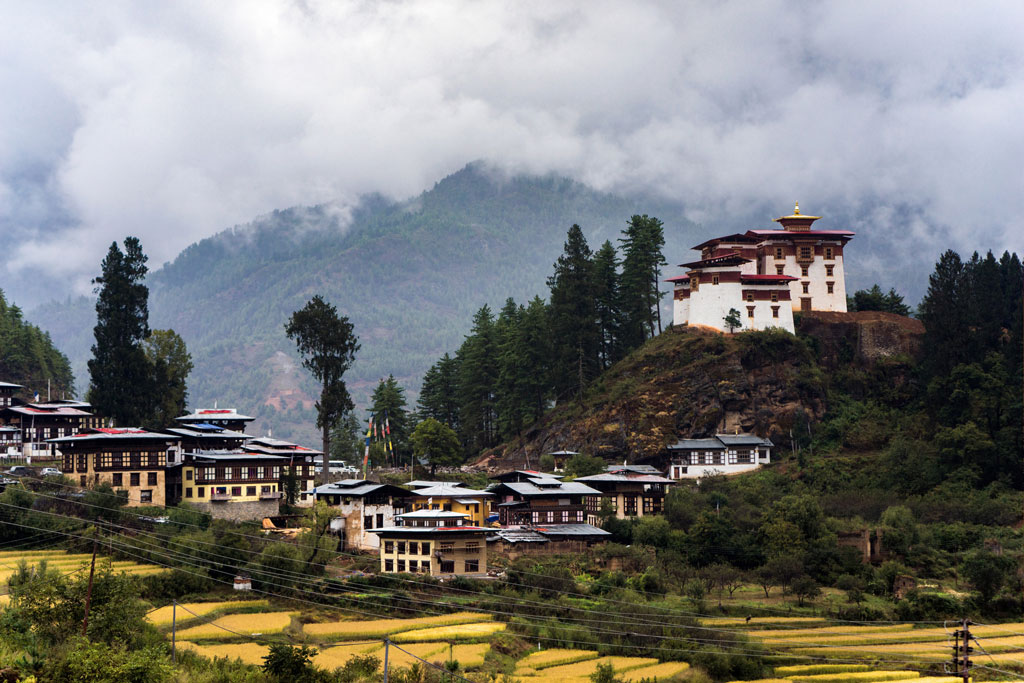
This is Six Senses Bhutan, a new circuit of lodges that took more than five years to build and which now connect a handful of western and central valleys. Thimphu, Punakha, Paro, Gangtey and Bumthang each have their own rendition.
Here in the master lodge in Thimphu (nicknamed the Palace in the Sky), white stonewashed walls and a shingle roof take their cues from local architecture. Rooms are simple, with Himalayan hemlock floors, tan leather armchairs and cosy wool rugs, plus a bukhari (woodburning stove) for chilly nights. There’s a spa and a main social space divided into a living room, restaurant and bar, all with the same mesmerising views. At the entrance a mandala of the Medicine Buddha symbolises positive energy.
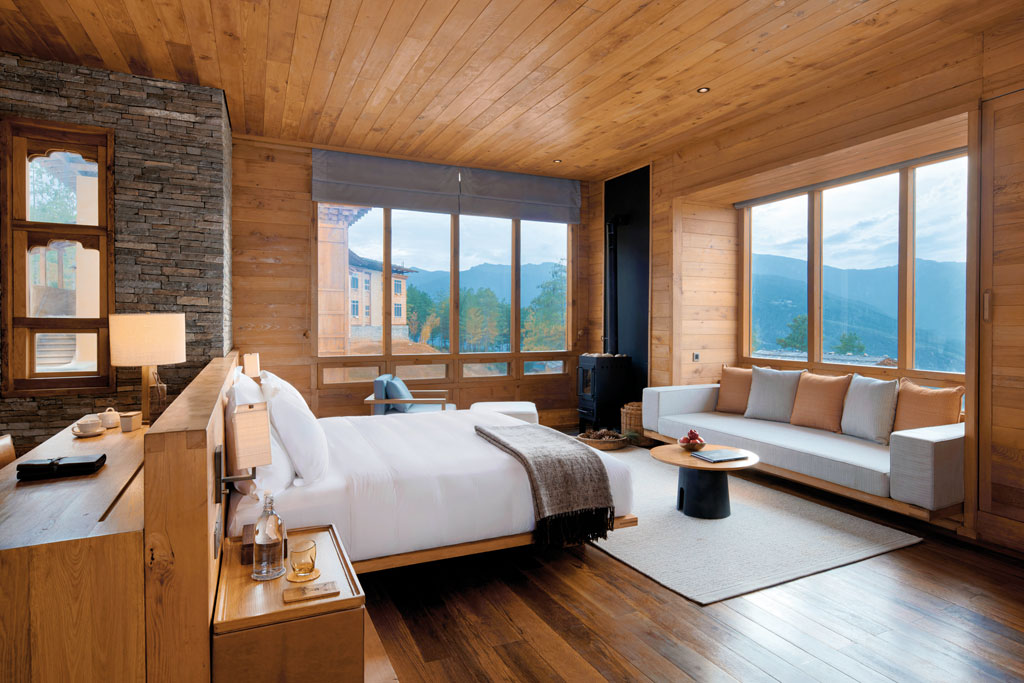
Rooms are designed to make the most of the awe-inspiring views
Buddhism was first introduced to the country by Indian guru Padmasambhava in the eighth century (although it’s Tibetan Zhabdrung Ngawang Namgyal who’s considered the founder of modern-day Bhutan). Its spiritual teachings are embedded in everyday life, from the clusters of 108 white prayer flags fluttering on the hills, which are said to protect the soul after someone passes away, to daily offerings for the deities.
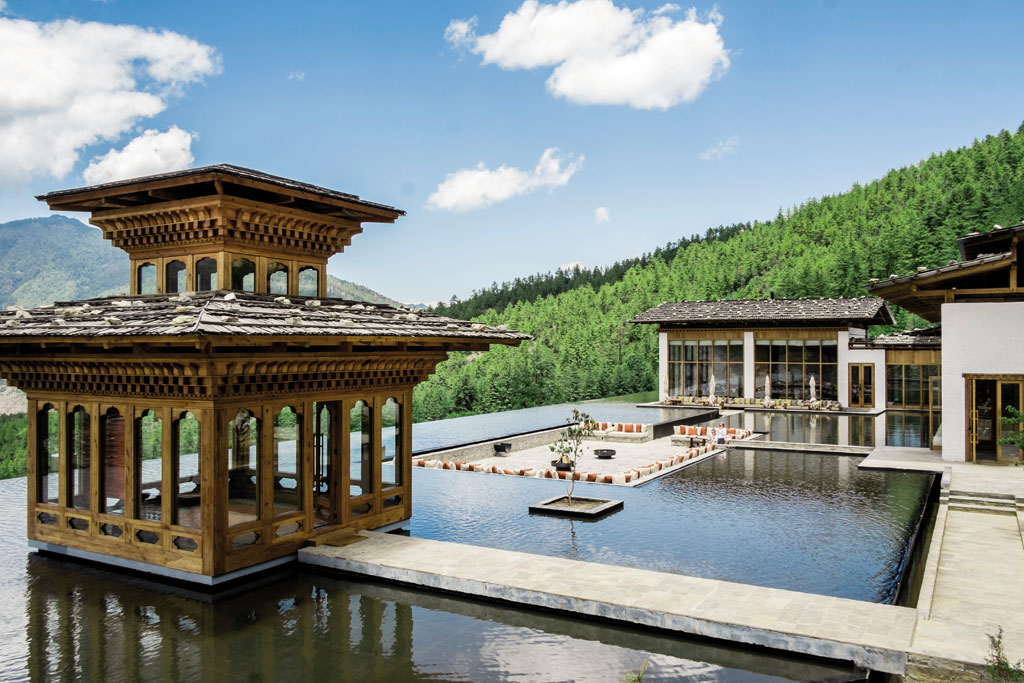
Meditation comes easily at Six Sense Thimphu
‘Bhutan is full of belief,’ confirms our driver later, as we pass a house with incense burning outside, wisps of smoke curling up and disappearing into the warm afternoon air. Then there’s the Gross National Happiness index, a term coined in the 1970s by the Fourth Dragon King of Bhutan, to sum up the nation’s wellbeing philosophy of putting people rather than material possessions first.
A handful of key fortresses are scattered throughout Bhutan, but the Tashichho Dzong in Thimphu, rebuilt many times after fire, is particularly impressive. It houses the offices of the current king, as well as monks’ quarters and a temple decorated with traditional thangka paintings and colourful ritual cakes at the altar. We spend our time there marvelling at the huge golden Buddha Dordenma statue with its meditation hall underneath, and strolling through the Centenary Farmers Market, where stalls are stacked high with foods like popped rice and dried yak’s cheese.
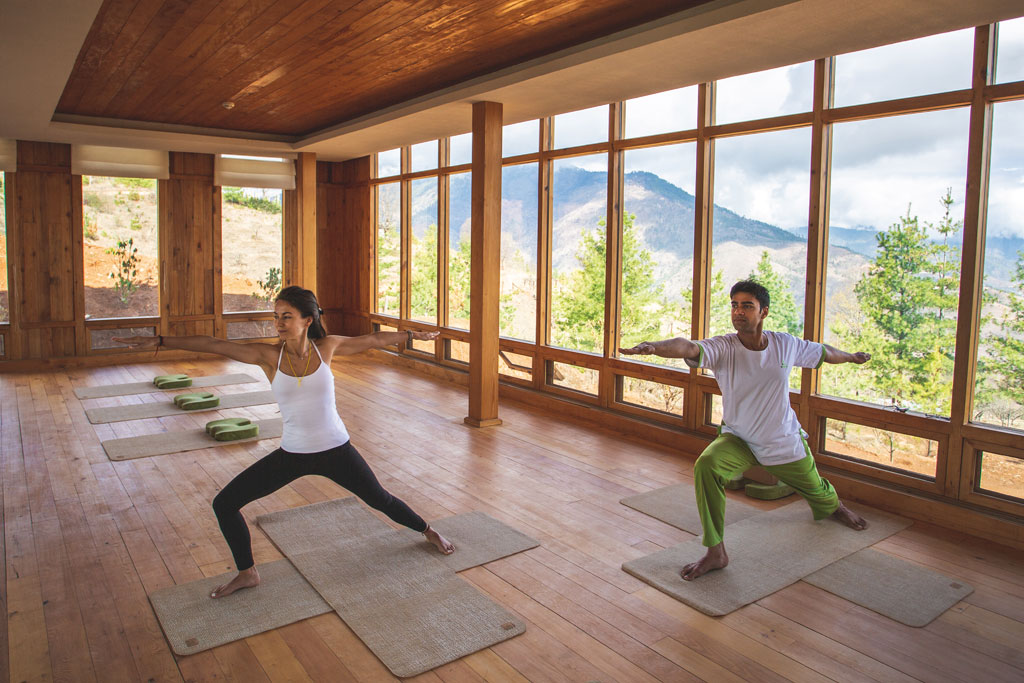
Perfect your warrior pose
Across Bhutan, many men and women are required to wear the distinctive national dress to work (for the former, that means a knee-length plaid robe held in place with a woven cloth belt; for the latter, an ankle-length dress called a kira). This is a visual reminder of how life has remained unchanged for centuries, despite Bhutan opening up to tourism 45 years ago – thanks to its sustainable, high-value, low-impact model. This is especially true of the lush Punakha Valley, known as the larder of the country. As we drive over the Dochula Pass, pine trees give way to a tropical canopy and terraced rice paddies. More than 70 percent of land in Bhutan is forested, absorbing more than six million tonnes of carbon a year. This, alongside the fact its hydropower is exported to India, explains its status as the only carbon-negative country in the world.
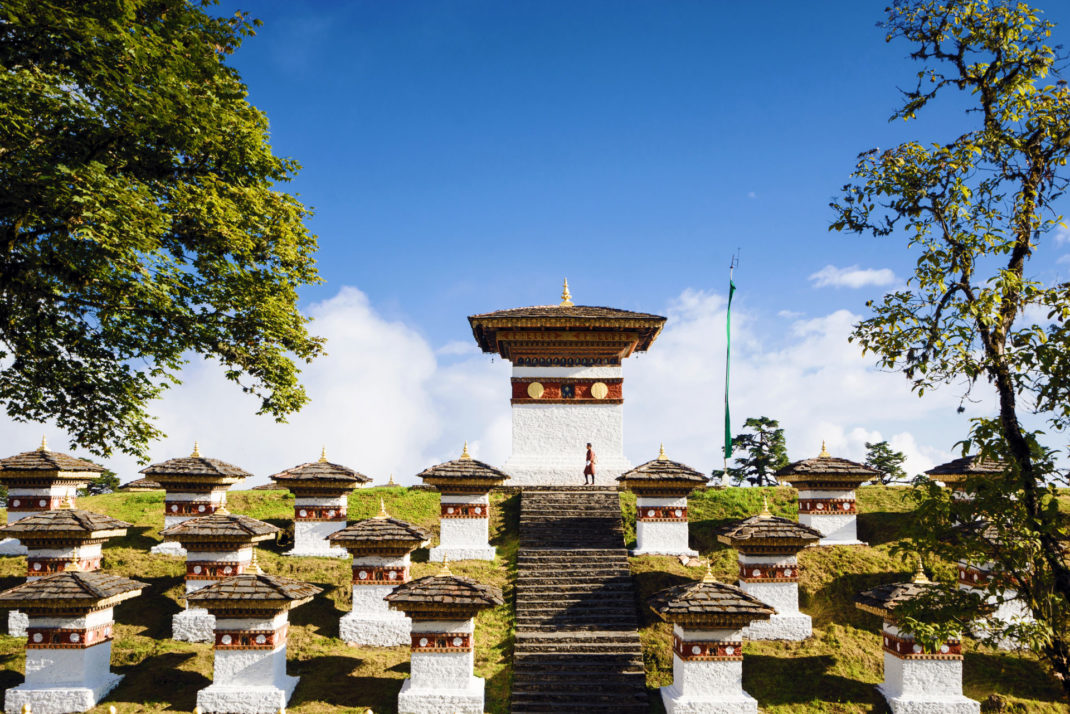
The Dochula Pass
Hiking through fields of red chillies and aubergines to a tucked-away 17th-century temple is peaceful and uplifting. This rural landscape is reflected in the intimate, rustic design at Six Senses Punakha, where a typical farmhouse was the inspiration behind the wooden living room and bar, which cantilevers dramatically over the pool.
On the way to Paro, our final stop, lunch is chive and potato momos (dumplings) with seriously spicy ezay sauce, as well as spinach jaju soup with rice, and dry chilli and cheese (the Bhutanese love chilli and cheese). Everything is surprisingly delicious.
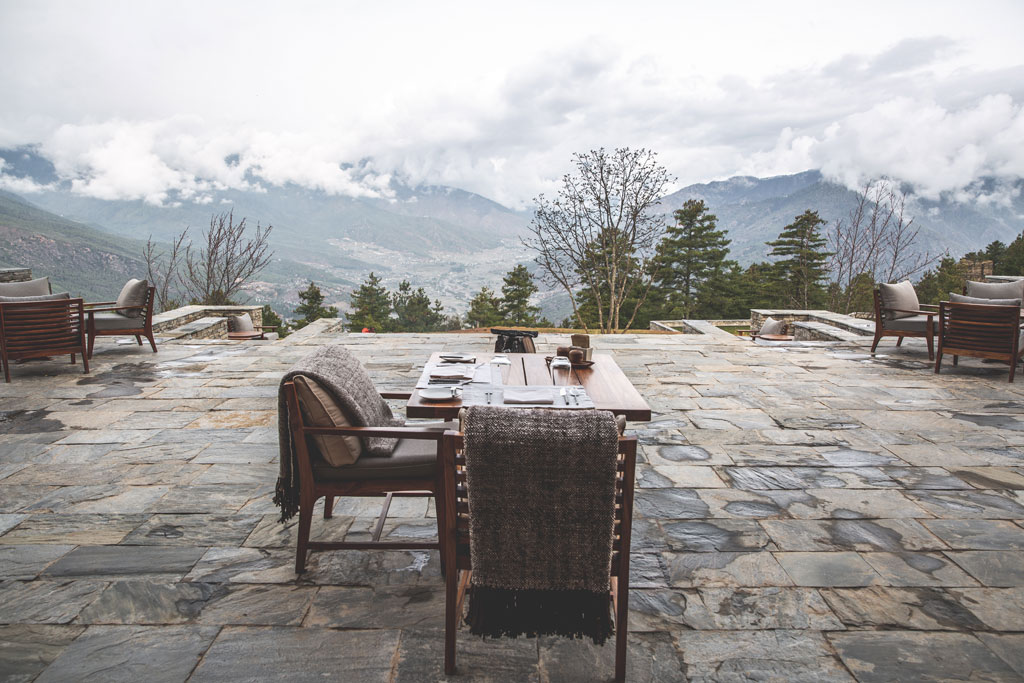
Paro town itself is really just a main street lined with shops selling singing bowls and the softest wool shawls. Like us, the majority of people who visit use it as a base to climb Tiger’s Nest, Bhutan’s most famous monastery, perched on a sheer cliff face 3,120 metres above sea level.
Setting off at 7am next morning, it feels as if the entire trip has been leading to this moment. After 45 minutes of huffing and puffing up a steep dirt track, the monastery emerges like an apparition through the mist. Thanks to our early start we’re the only visitors privileged to witness nearly 30 monks filing into the main temple to begin ten days of rhythmic chanting, music (played with conch shells, trumpets and drums) and praying for world peace. It’s soul-stirring stuff.
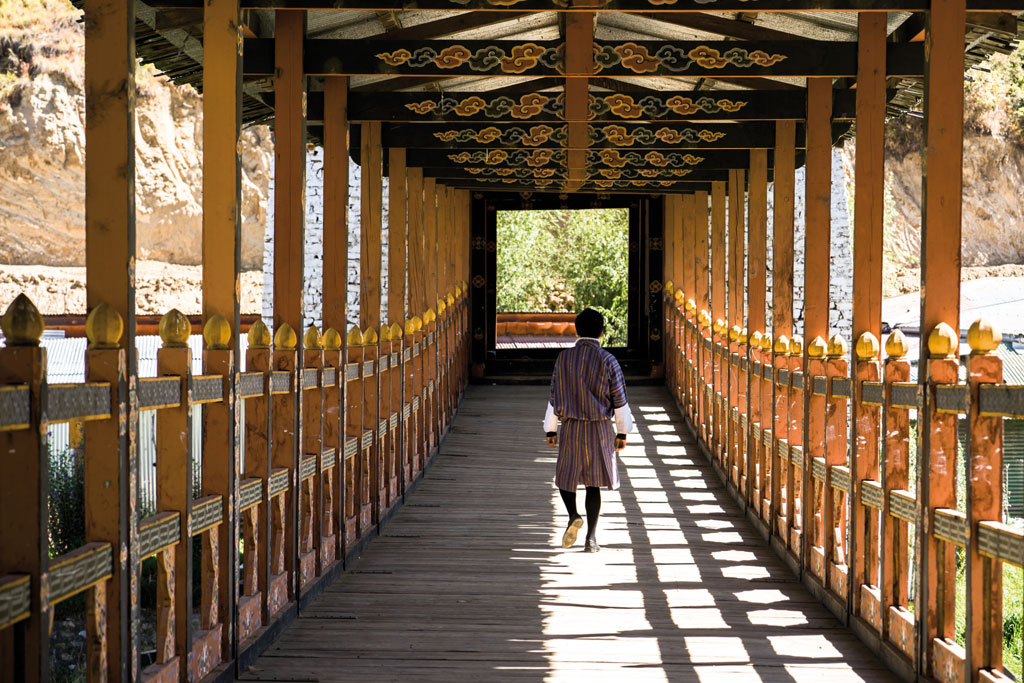
Before dinner on the last evening at Six Senses Paro (this property is different again, with a design inspired by the ruin of a neighbouring dzong), we visit its small on-site temple, where the resident monk guides us through meditation one last time. Floorboards creak, candles flicker and, for a few minutes at least, my mind is finally clear.
BOOK IT
From £9,970pp, based on two sharing, for a 13-night round trip to Bhutan via Delhi, including flights, transfers and some excursions. audleytravel.com
Featured Image: The Dochula Pass, Bhutan




